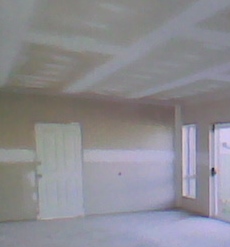There are a few plasterboard options when looking to improve the noise insulation.
These options in increasing order of cost are:
Differing Thickness On Each Face
By using different and thicker plasterboards on each wall face, say 13mm and 16mm, it will change the resonant frequency to disrupt sound transmission
Acoustic Plasterboard
It is possible to order a special accoustic plasterboard which has a denser core than the standard board.
Double Layers of Plasterboard
The most effective, but most expensive, option is to use a double layer of plasterboard on each face of the walls and the ceiling. Again using different thickness will help.
Make sure the sheets overlap and use an acoustic glue between the boards.
One advantage of the double sheet is that it will also improve the fire resistance of the walls and ceiling.
Also
Use an Acoustic Caulk at wall to floor, wall to ceiling, and even at wall sheet joints.
Use solid doors with rubber seals.
For similar posts see: Noise
